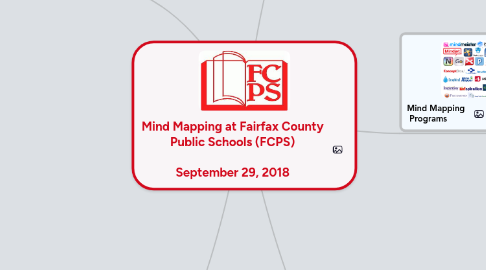
1. Mind Map Benefits
1.1. Connecting dots
1.1.1. Holistic integration
1.1.1.1. Scaffolding
1.1.1.2. Deep thinking
1.1.1.3. Meaningful learning
1.1.1.4. Self-directed learning
1.1.2. Personal, flexible, stimulating
1.2. Thinking!
1.2.1. "Thinking is the hardest work there is." -Henry Ford
1.2.2. Free-form, nonlinear
1.2.3. Analysis & synthesis
1.2.4. Problem-solving
1.2.5. Learning how to learn
1.2.5.1. Improved comprehension
1.2.5.2. Improved memory and recall
1.3. Creating!
1.3.1. Creative thinking
1.3.2. Personal product
1.3.2.1. Valuable output/creation
1.3.2.2. Link between action & outcome
1.3.2.3. Helps improve learning process
1.3.3. Social/collaborative skills
1.4. Ownership of learning (student-centered)
1.4.1. Engaged & motivated
1.4.2. Meaningful learning
1.4.3. Meaningful contribution
1.4.4. Sense of achievement / satisfaction
1.4.5. Better prepared to reach full potential
1.4.6. Lifelong learner
2. Additional Info
2.1. FCPS Critical and Creative Thinking Strategies
2.2. Toni Krasnic
2.2.1. tkrasnic@gmail.com
2.2.2. (646) 644-3792
2.2.3. www.ConciseLearning.com
2.2.4. www.MindMapsForKids.com
3. Mind Maps
3.1. Make thinking visible
3.1.1. Visual
3.1.1.1. Big picture (forest) & details (trees)
3.1.1.2. Words, images, numbers, logic, color
3.1.1.3. Structure, links, spatial awareness
3.1.1.4. Imagination
3.1.2. Reflection
3.1.3. Assessment
3.1.4. Improvement
3.2. Mind mapping process
3.2.1. Key concepts
3.2.1.1. Organizing
3.2.1.2. Connecting
3.2.2. Key questions
3.2.2.1. Inquiry
3.2.2.2. Discovery
4. Mind Mapping Programs
4.1. MindMeister
4.2. Inspiration
4.3. Other programs
4.3.1. iMindMap
4.3.2. Mindjet
4.3.3. ConceptDraw
5. Mind Map Uses
5.1. Students
5.1.1. Note taking
5.1.2. Research and writing
5.1.3. Summary maps
5.1.3.1. Books
5.1.3.2. Articles
5.1.4. Exam preparation
5.1.5. Transformation from rote studying to self-direct learning
5.2. Teachers
5.2.1. Planning
5.2.1.1. Syllabus
5.2.1.2. Manage classes
5.2.2. Research
5.2.3. Lectures
5.2.3.1. Content
5.2.3.2. Discussion
5.2.3.3. Resources
5.2.4. Link teaching with learning
5.2.4.1. Before class
5.2.4.2. During class
5.2.4.3. After class
5.2.5. Assessment
5.2.5.1. Transparent thinking
5.3. Other uses
5.3.1. Personal dashboard
5.3.2. Project management
5.3.3. Problem solving
5.3.4. Decision making
